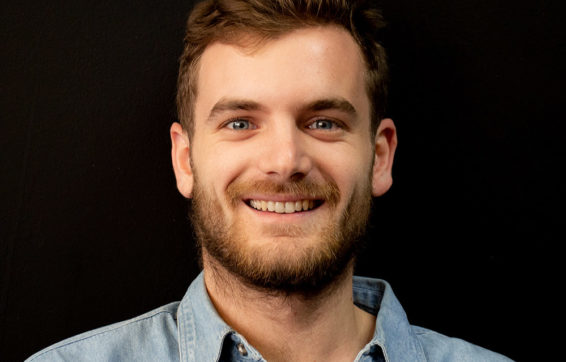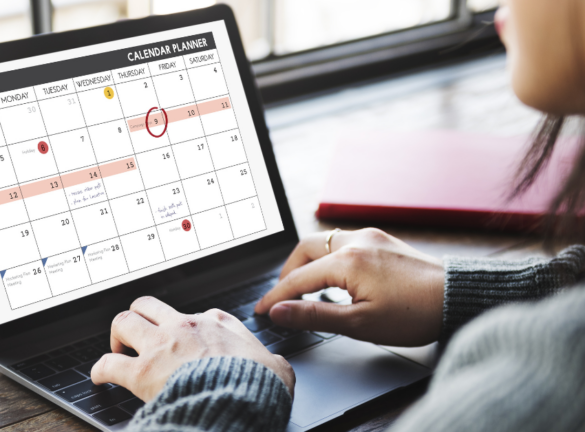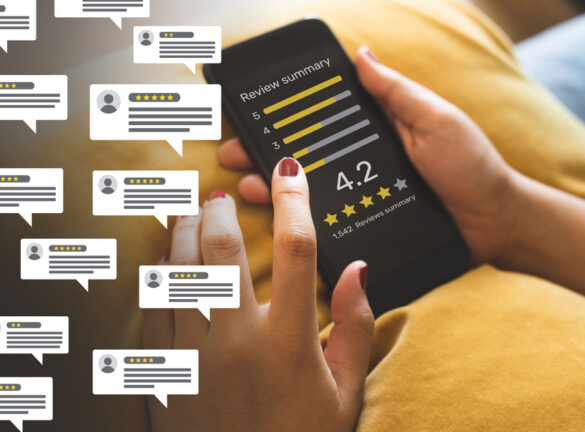
How Brits Consume Media in 2023: The 7 Best Charts from Ofcom’s Media Nations Report
Ofcom recently released their annual media nations report, which features 72 pages of data and analysis. Here I share the 7 most thought-provoking charts and some quick-fire analysis.
Broadcast TV Viewing Continues Its Steady Decline
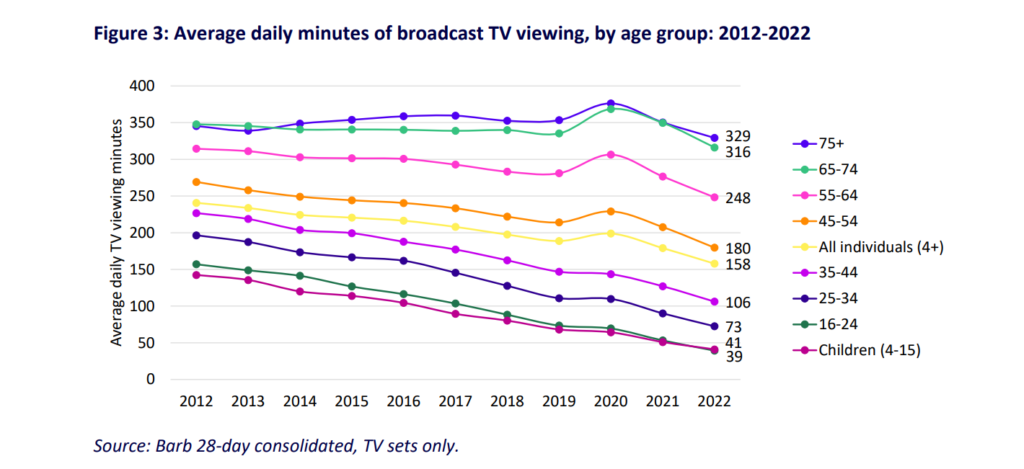
TV isn’t dying, it’s just changing. As viewing options diversify, broadcast TV viewing continues its slow decline, and it looks like nothing will stop this trend. Viewing of broadcast TV is now down 16% compared to 2019 and older audiences, which were consistent pre-pandemic, have now begun to drop off. From a media planning perspective, broadcast now needs to be complimented by other video options.
As Viewing Continues To Fragment, Mass-Reach Transmissions Are Becoming Rare
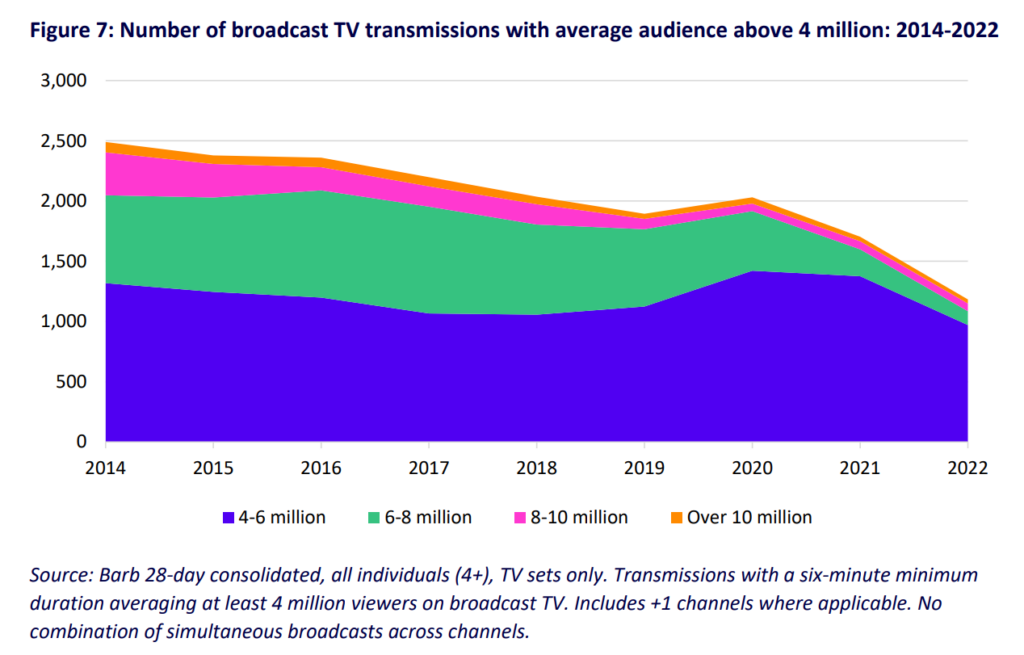
Back in 2010, when The X Factor was at the peak of its powers, the final reached 19.4 million live viewers. Things have changed since then, with the most comparable event of 2022 being the I’m a Celebrity… Get Me Out of Here! final which reached only 11.5 million. Now only national events (such as the Coronation) and major sports fixtures (such as the FIFA World Cup) can hit The X Factor sized numbers. Are we a nation divided? Or just blessed with better choice? The jury’s out.
SVoD Penetration Plateaus In The Face Of Cost-of-Living Crisis
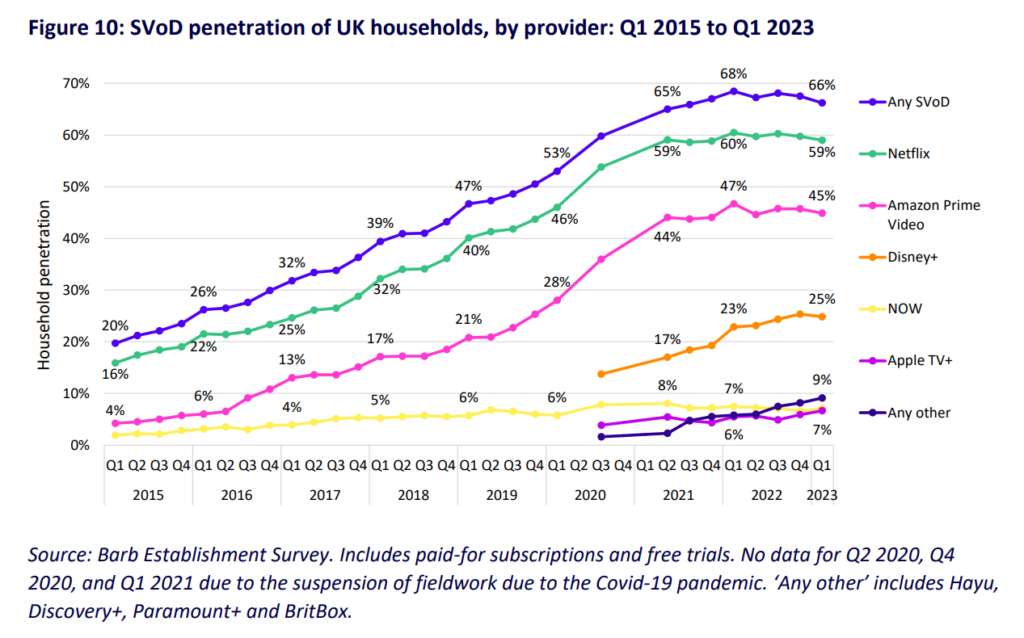
With slowing subscriber growth, writers’ strikes and wide-spread lay-offs the landscape is treacherous for the streaming giants. For advertisers and agencies alike, the silver lining is the new opportunities presented by the ad-supported tiers that streaming platforms are rolling out. Great content, big screens and hard-to-reach audiences. It’s a triple threat.
TikTok Has A Tight Grip On 15-24s, Who Spend An Hour On The Platform Per Day
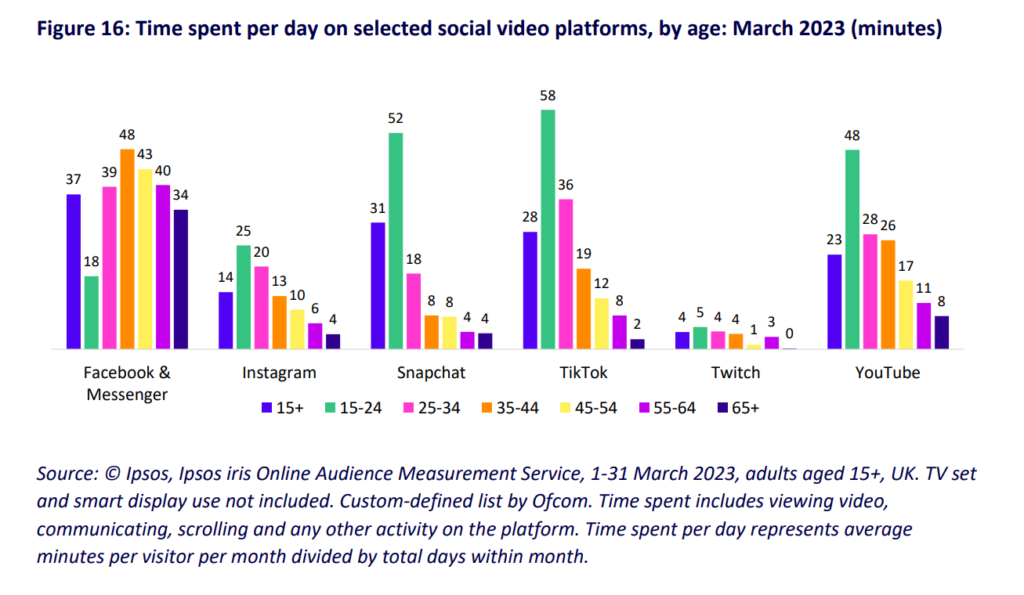
TikTok growth has slowed down since COVID, and I think its reputational issues have contributed to usage from wider age groups growing at a slower rate than expected.
However, its stickiness with 15-24s is remarkable and makes it a key consideration for anyone trying to reach this age group. The thing that brands get wrong on TikTok is creative, which needs to fit the context of the platform. Repurposed creative often doesn’t stand a chance and invalidates the results of a well-intentioned TikTok test campaign.
41% Jump In Podcast Ad Spend Drives Growth For Digital Audio
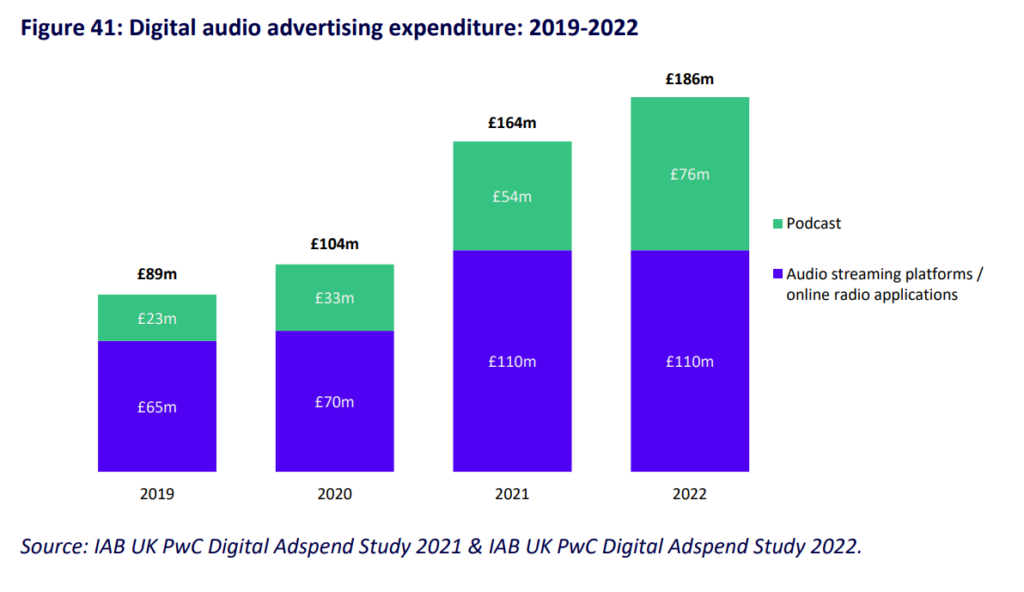
It’s been a huge year for podcast advertising with brands flocking to the medium. The personal ‘1-to-1’ nature of podcast listening and the rapidly diversifying genres, appearing against it make it an attractive place to advertise and I imagine a lot of this growth is coming from B2B brands entering the space in the hope of building frequency with decision-makers.
Growth In Podcasts Is Generally Strong, But Fewer Young Adults Are Listening
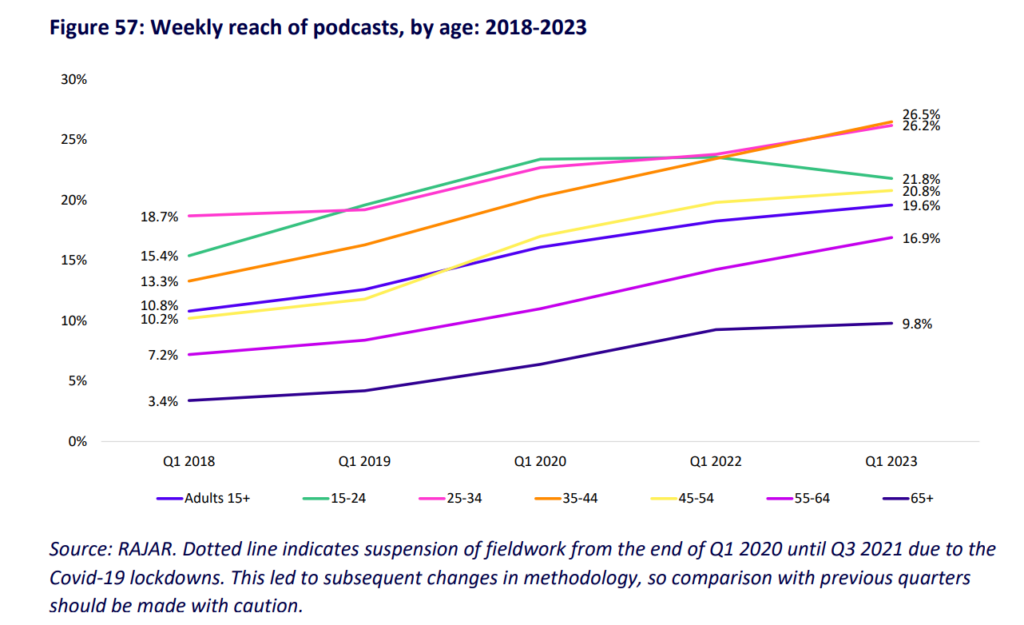
Podcast listening is growing fast (although not nearly as fast as spend), driven mainly by the core 25-44 age group. For me, the interesting quirk in the data is the green line showing a small decline amongst 15-25s. Why are this age group not listening to podcasts? Is it because they are mainly interested in TikTok? Is it because they aren’t drawn to ‘self-improvement’, to the same degree as other age groups, which drives a lot of podcast listening? Are podcasts incompatible with the patterns of school and university? A lot of adults listen while commuting, which is a daily rhythm
which doesn’t exist in quite the same way when you’re in education.
Are we witnessing a new post-audio generation? Or are we just getting carried away after seeing a small aberration in the data? Only time will tell. Also, interesting to note that Southern and London audiences are considerably more likely to listen to podcasts than average.
Smart-Speaker Listening Grows To 20% Of At Home Listening
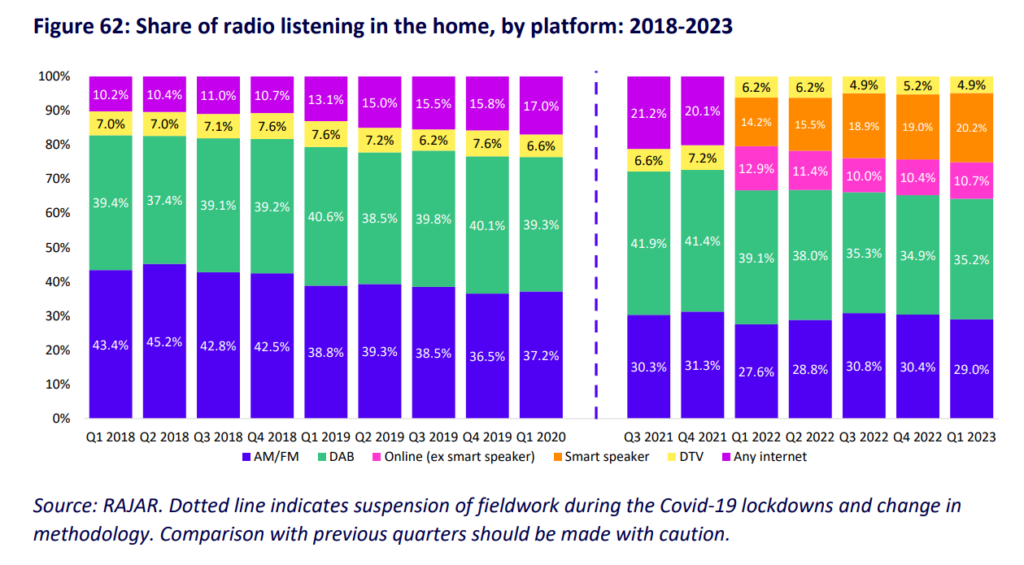
In the blizzard of ‘Metaverse’ and then ‘AI’ hype it seems many marketers (or at least many Linkedin content creators) have forgotten about the humble smart speaker. However, anyone who knows audio understands that the fact that they now make up 20% of at-home radio consumption is a real milestone. Actionable audio ads are powerful (a recent study showed they triggered a 25% increase in overall brain activity compared to standard audio ads*) and I think there’s a big opportunity for more brands to get into this space. Four in ten households now have at least one smart speaker, so its not just the ‘early adopters’ anymore.
*Source: Power_of_Audio_White_Paper_V5.pdf (sayitnow.ai)
If you’re interested in further Insights, reach out to our ROAST Insights team.
Contact
"*" indicates required fields


